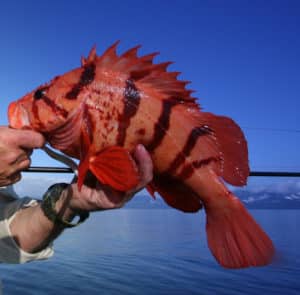The Oklahoma portion of the Illinois River, a tributary of the Arkansas River, is known for its scenic views and float trips. Few anglers venture to test these smallmouth waters, and the few that do probably won’t be happy I’m about to spill the beans on this fishing spot. While I’m hesitant to claim the state record swims here, I can confidently say there are loads of quality bass in the 18- to 19-inch range.
Locating River Smallmouth Bass
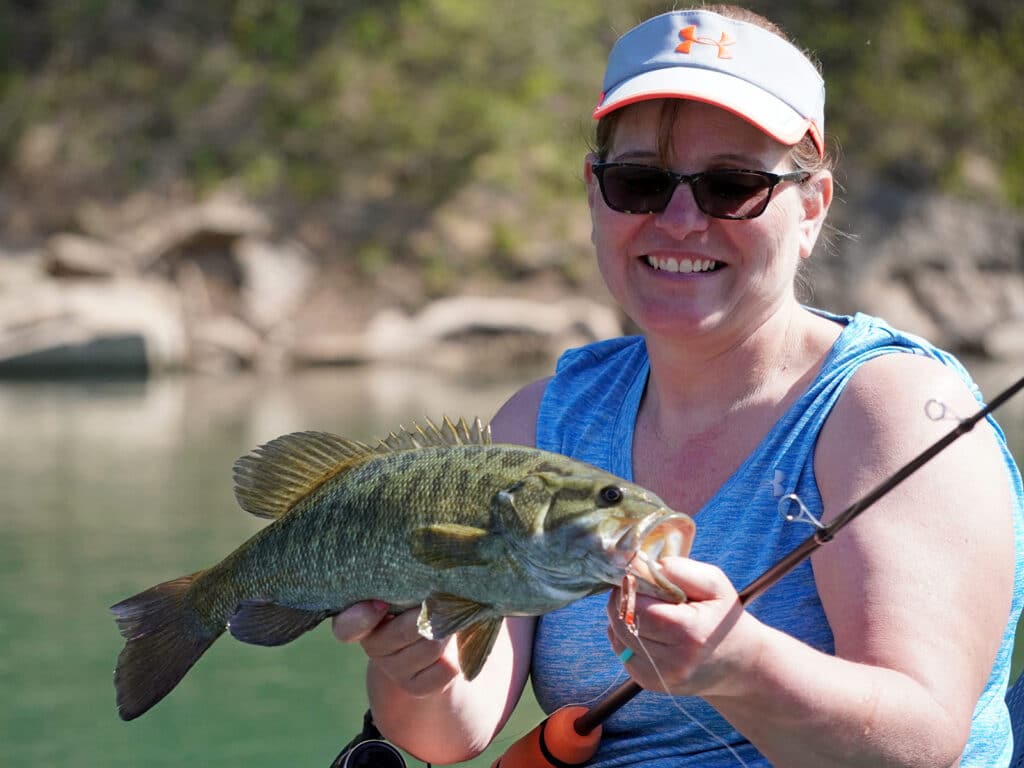
Smallmouth bass are found throughout the river, but because of the number of people who float the river every summer, I recommend fishing in the spring, or above the put-in spots and below the take-out locations of the float companies near Tahlequah, Oklahoma.
You can also use one of these float companies to your advantage. Rent a vessel from one of them if you don’t have your own. You can still catch plenty of bass in the more crowded portions of the river; just know that you might have an audience when you hook a smallmouth in the summer months.
The old cliché is true: You never fish the same river twice. But I’ve found that you can take a similar approach to the river. The deep holes with brush always seem to hold fish. I rarely spend time fishing anything that doesn’t break the current. Sometimes, this means I’m casting at a single large rock in the middle of the river. Other times I aim for the laydown on the bank’s edge.
Smallmouth bass use current breaks to rest while waiting for their next meal, so if you cast your lures in these areas, you’ll get more bites.
Wade fishing is possible on a lot of the river, but the best approach is to use a fishing kayak. I love the agility of a kayak over a canoe. Once I thoroughly fish a hole, I can quickly move on to the next spot easily. A full-size canoe simply doesn’t maneuver as well as a fishing kayak.
Smallmouth Bass Lures for River Fishing
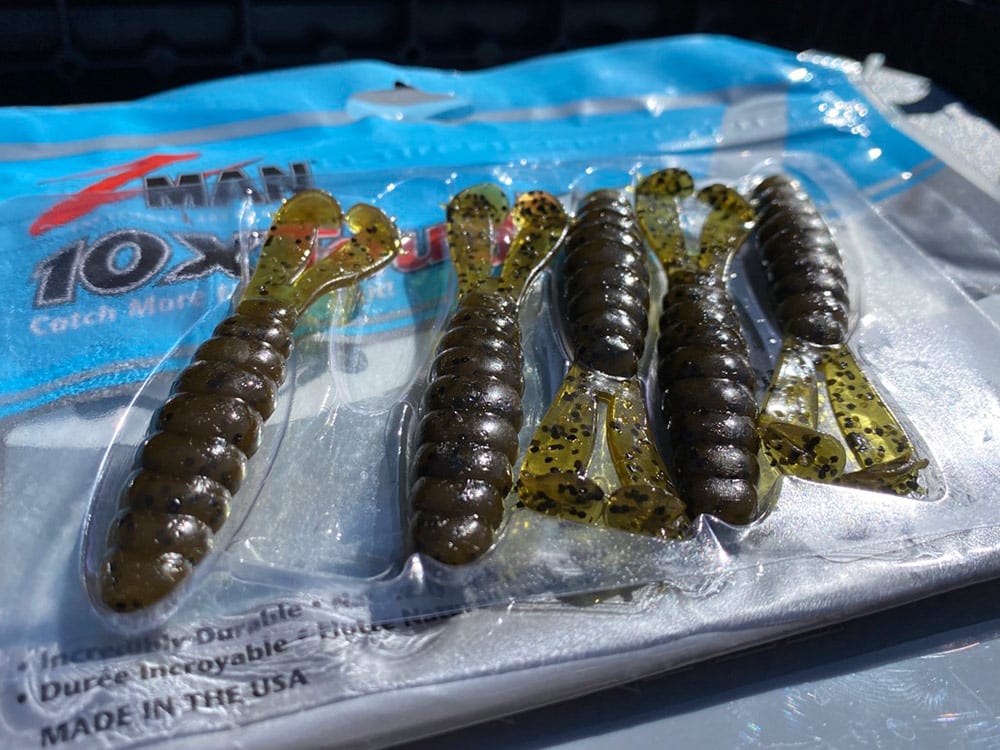
Call me a minimalist, but I use just a few lures when fishing for river smallies. That might be because I’m in a kayak and can’t bring my entire collection of lures, but I prefer to believe it’s because I’ve found the baits that work best time and again.
Topwater Lures
A River2Sea Whopper Plopper, Berkley Choppo or similar style bait is my favorite topwater for river bronze-backs because it doesn’t take much to annoy them into biting. And it floats, so I can cast it in the shallows without getting snagged.
Moving Lures
I’m a power fisherman through and through, so moving lures are my go-to option. The lures I catch most of my smallmouth on in my plastic boat are shallow-diving crankbaits, swimbaits and inline spinners.
Finesse Lures
Even though I prefer moving baits, sometimes I have to slow down. That’s when I’ll tie on a Ned Rig or Wacky Rig. The Z-Man TRD CrawZ is my go-to soft plastic for a Ned Rig when river fishing. A Yamamoto Senko or Berkley Powerbait The General is a perfect wacky rig soft-plastic option.
Planning Your Smallmouth Fishing Trip
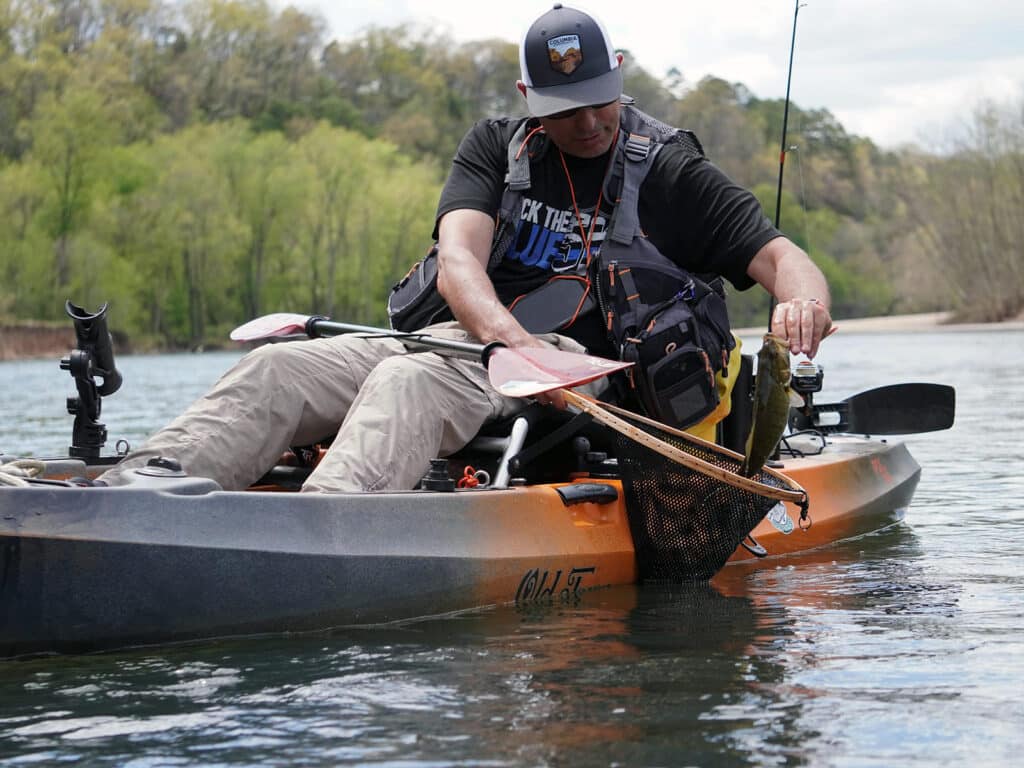
Growing up, we would haul our kayaks and canoes from home to fish the lower Illinois River for trout regularly. The Oklahoma Department of Wildlife Conservation (ODWC) stocks it with rainbow trout every few weeks when the conditions are right.
However, many float companies, especially on the upper Illinois River, rent kayaks and canoes. Plus, they provide transportation to and from the river. This is an excellent option if you don’t own a small kayak or don’t feel like transporting it.
Another downside to bringing your boat is figuring out where it’s legal to launch and take out your vessel. The Illinois River has plenty of current, so you won’t be putting in and getting out in the same location. That’s why I recommend using a local float company if it’s your first trip to the Illinois River.
Best Time of Year for Smallmouth Bass
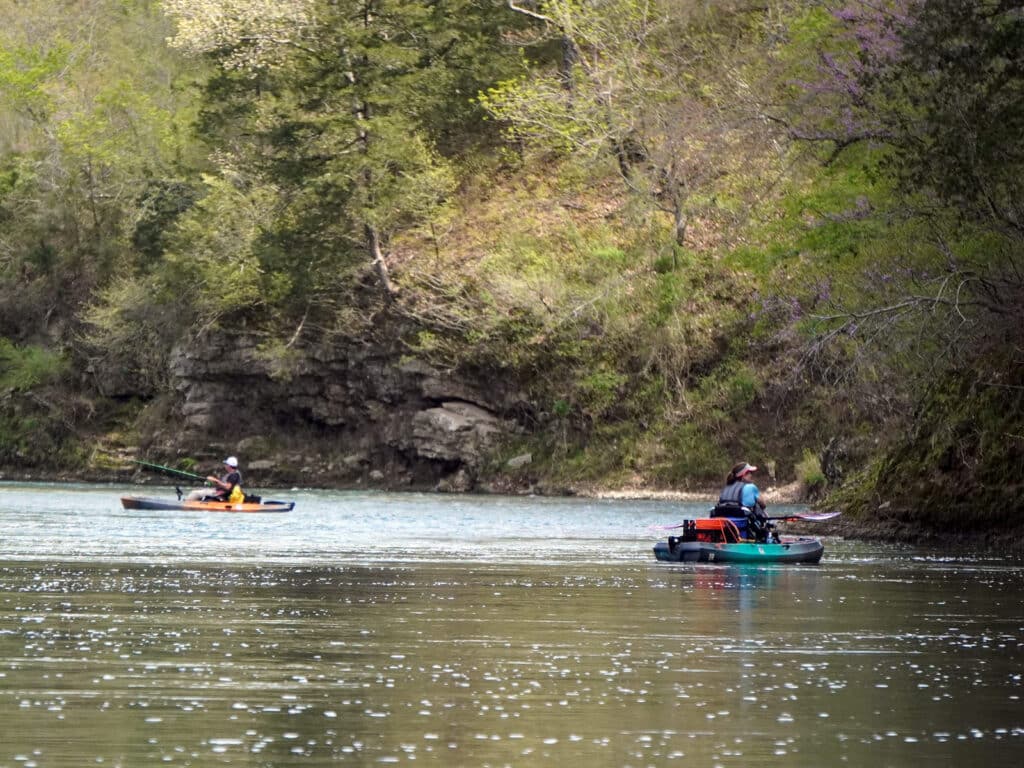
The upside to bringing your kayak or canoe is that the time of year won’t determine if you can hit the water. Most float companies are only open during the summer, limiting your opportunities to fish. The best fishing on the Illinois River occurs in the spring, early summer, and fall because you can avoid the crowds. That also tends to be when local smallmouths bite best.

